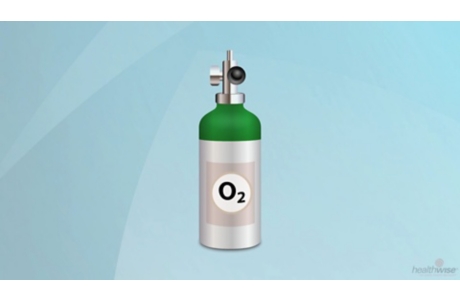COPD Flare-Ups
Topic Overview
When you have COPD, especially if you have chronic bronchitis, you may sometimes have sudden attacks where your breathing and coughing symptoms suddenly get worse and stay that way. These attacks are called COPD exacerbations, or flare-ups.
With treatment, many people recover and return to the same level of shortness of breath they had before the attack.
These attacks may be life-threatening. If your symptoms suddenly get worse, and if taking your medicine doesn’t help, have someone take you to the emergency room. Call 911 if needed.
COPD attacks often occur more frequently, last longer, and are more severe the longer you have COPD.
Cause
The two most common causes of a COPD attack are:footnote 1
- Respiratory tractinfections, such as acute bronchitis or pneumonia.
- Air pollution.
Having other health problems, such as heart failure or an abnormal heartbeat (arrhythmia) may also trigger a flare-up. In some cases, the cause is not known.
Here’s what happens during an attack:
- Your lungs may suddenly produce more mucus. Or the airways of your lungs (bronchial tubes) may suddenly get narrower.
- These two things reduce the airflow in your lungs.
- And that makes it harder to breathe and makes your coughing worse.
Symptoms
In a COPD attack, your usual symptoms suddenly get worse:
- You have more shortness of breath and wheezing.
- You have more coughing, with or without mucus.
- You may cough up more mucus than usual, and it may be a different color.
Some people also have a fever, insomnia, fatigue, depression, or confusion.
Treatment
Treatment of a COPD attack depends on how bad it is. It may involve several visits to your doctor’s office or clinic. Or you may need to be treated in the hospital.
To treat COPD attacks, experts recommend:
- Quick relief (short-acting), inhaled bronchodilators, which are medicines that relax the bronchial tubes and make it easier to breathe. These medicines may include:
- Anticholinergics (such as ipratropium).
- Beta2-agonists (such as albuterol).
- Oral corticosteroid medicines, which reduce the swelling in your airways and may make breathing easier. They are typically given for 5 days to up to 14 days to those who aren’t already taking them as part of their long-term treatment.
- Ventilation devices, which are machines that help you breathe better or breathe for you. They are used most often in the hospital during COPD flare-ups.
- Oxygen, to increase the amount of oxygen in your blood.
Treatment may also include:
- Intravenous (IV)fluids, to treat dehydration.
- Other bronchodilators, such as intravenous theophylline. These are used only if other treatments don’t work.
- Diuretics, which remove water from the body by making your body produce more urine. These medicines are used if you are suspected of having heart failure.
- Antibiotics. People who have COPD have an increased risk of getting pneumonia and frequent lung infections. Your doctor may prescribe antibiotics to help keep you from getting a bacterial infection.
References
Citations
- Global Initiative for Chronic Obstructive Lung Disease (2017). Global strategy for the diagnosis, management, and prevention of chronic obstructive pulmonary disease. http://goldcopd.org/gold-2017-global-strategy-diagnosis-management-prevention-copd. Accessed November 27, 2016.
Other Works Consulted
- Global Initiative for Chronic Obstructive Lung Disease (2017). Global strategy for the diagnosis, management, and prevention of chronic obstructive pulmonary disease. http://goldcopd.org/gold-2017-global-strategy-diagnosis-management-prevention-copd. Accessed November 27, 2016.
Current as of: April 1, 2019
Author: Healthwise Staff
Medical Review:E. Gregory Thompson MD – Internal Medicine & Adam Husney MD – Family Medicine & Hasmeena Kathuria MD – Pulmonology, Critical Care Medicine, Sleep Medicine
This information does not replace the advice of a doctor. Healthwise, Incorporated, disclaims any warranty or liability for your use of this information. Your use of this information means that you agree to the Terms of Use. Learn how we develop our content.






